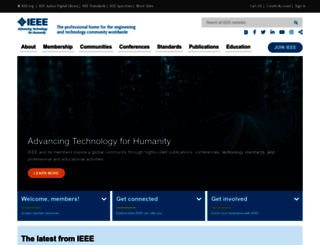IEEE - The world's largest technical professional organization dedicated to advancing technology for the benefit of humanity.
Page Load Speed
2.3 sec in total
First Response
65 ms
Resources Loaded
1.5 sec
Page Rendered
729 ms

About Website
Visit ieee.net now to see the best up-to-date IEEE content and also check out these interesting facts you probably never knew about ieee.net
IEEE is the world's largest technical professional organization dedicated to advancing technology for the benefit of humanity.
Visit ieee.netKey Findings
We analyzed Ieee.net page load time and found that the first response time was 65 ms and then it took 2.2 sec to load all DOM resources and completely render a web page. This is quite a good result, as only 45% of websites can load faster.